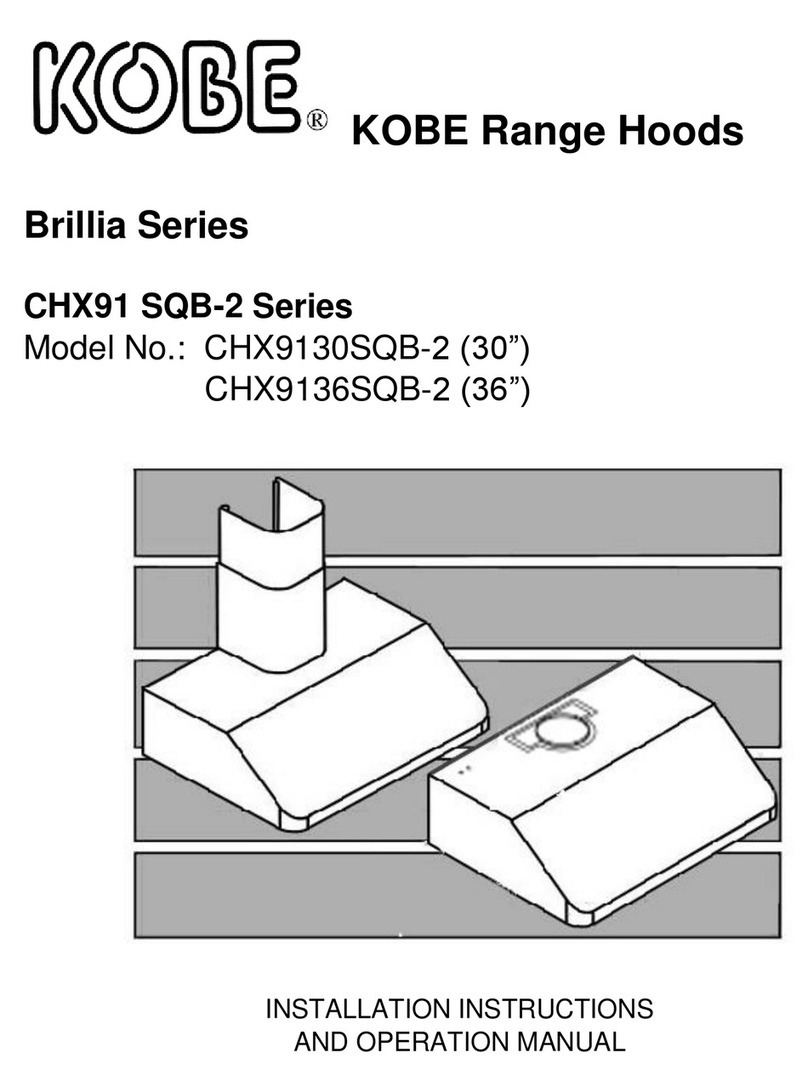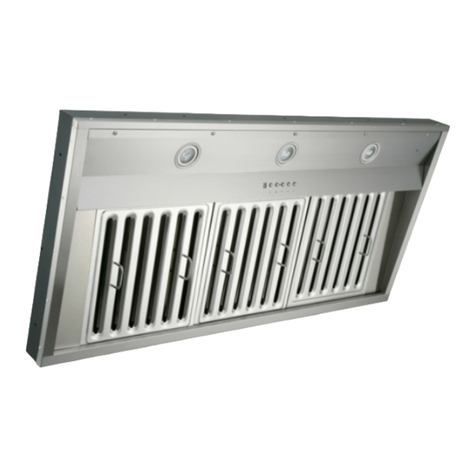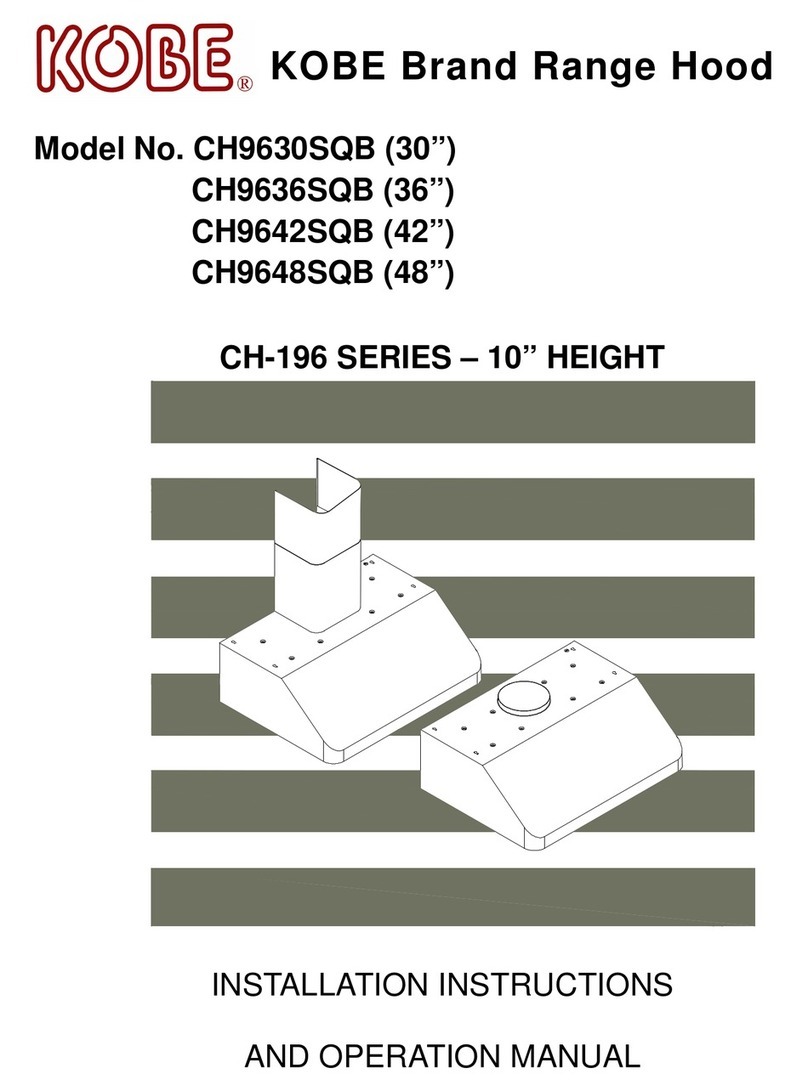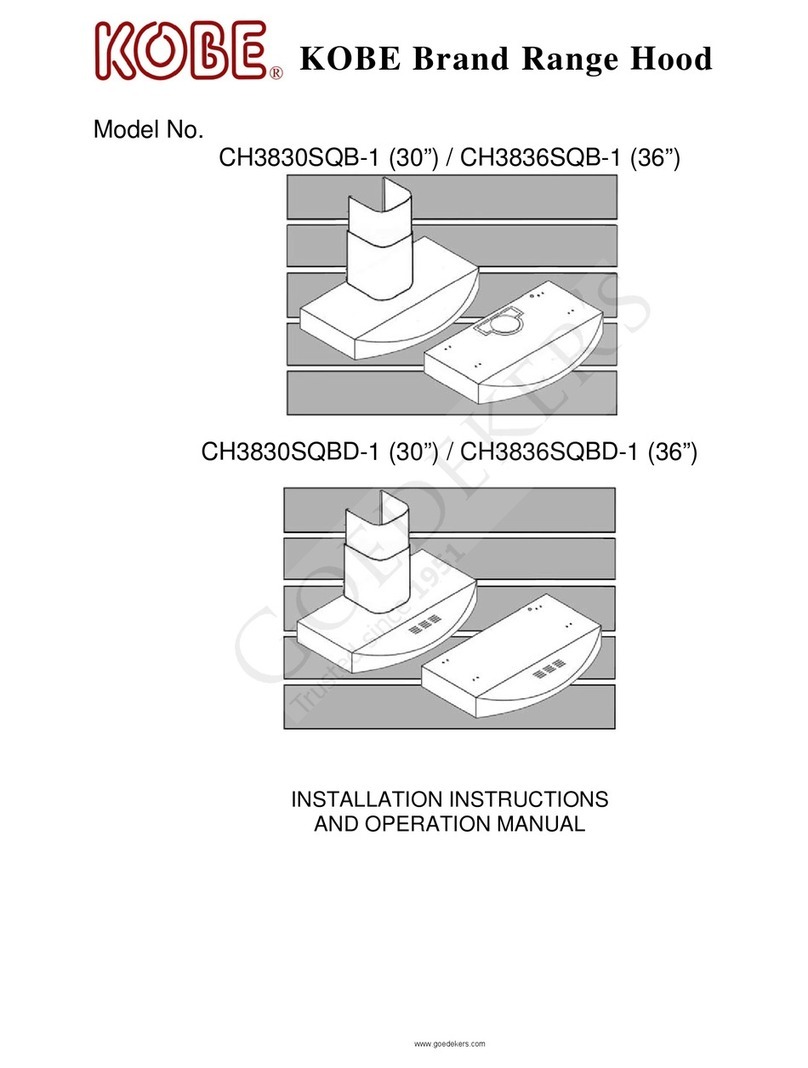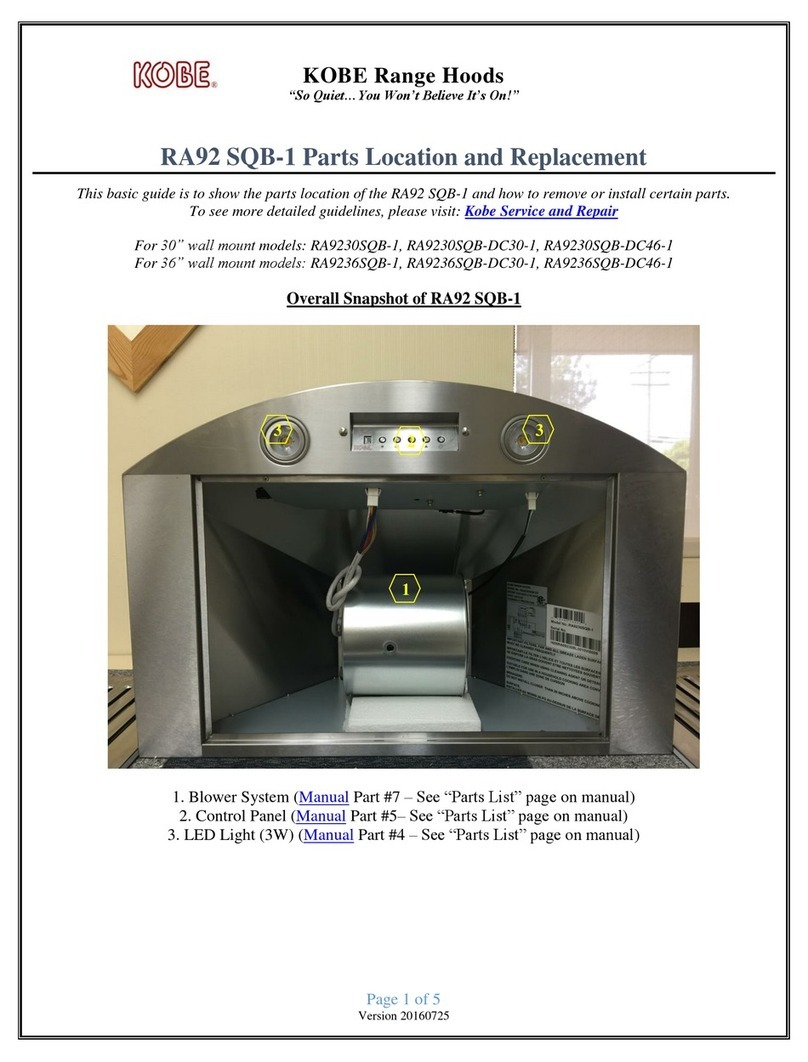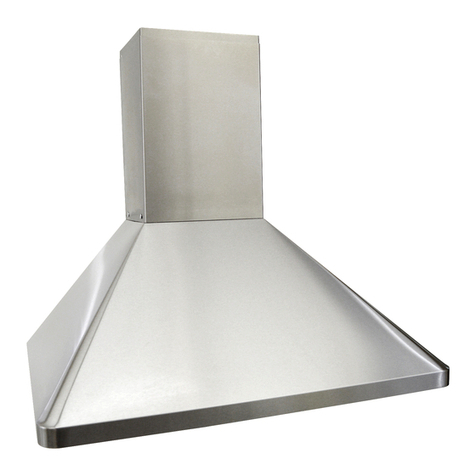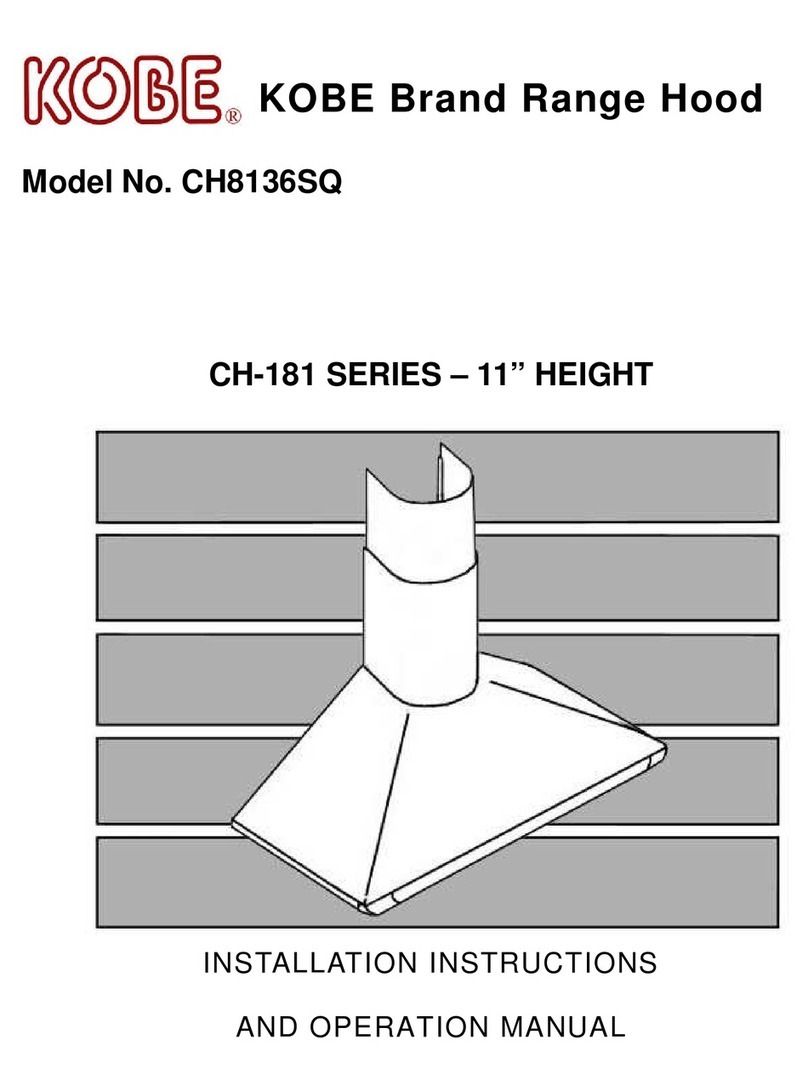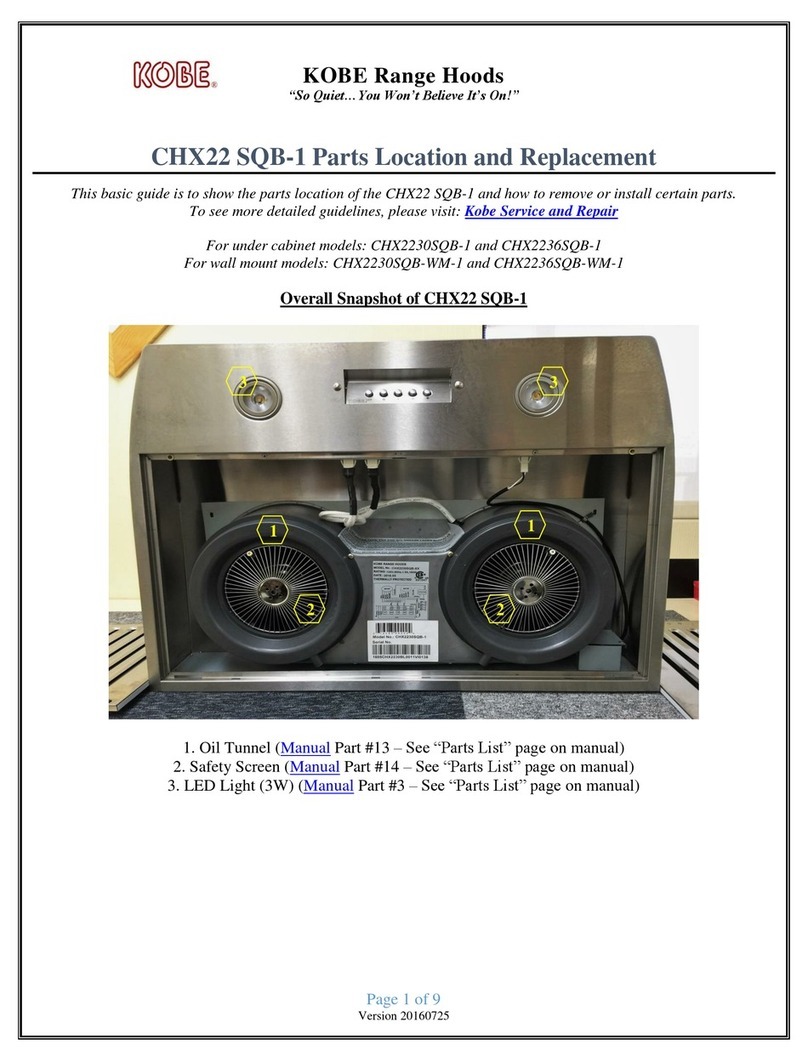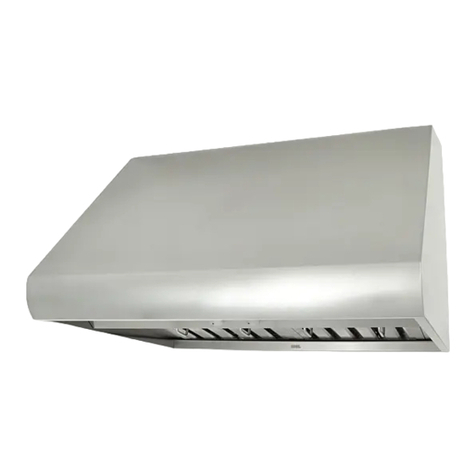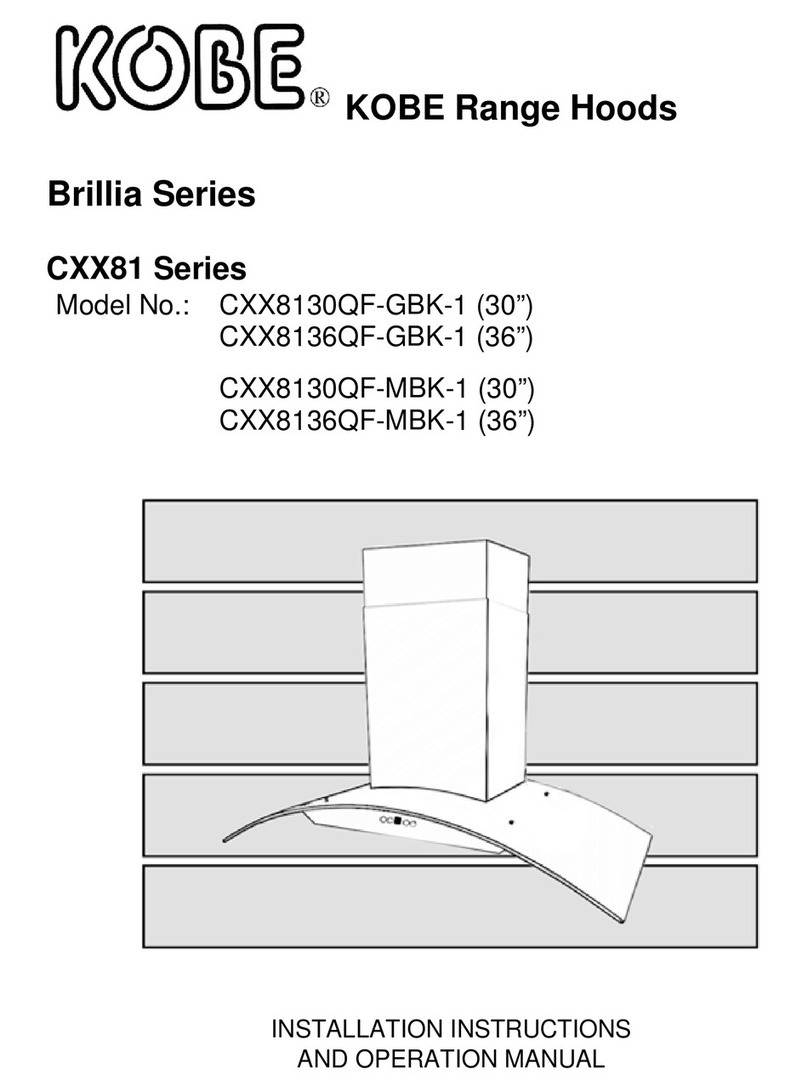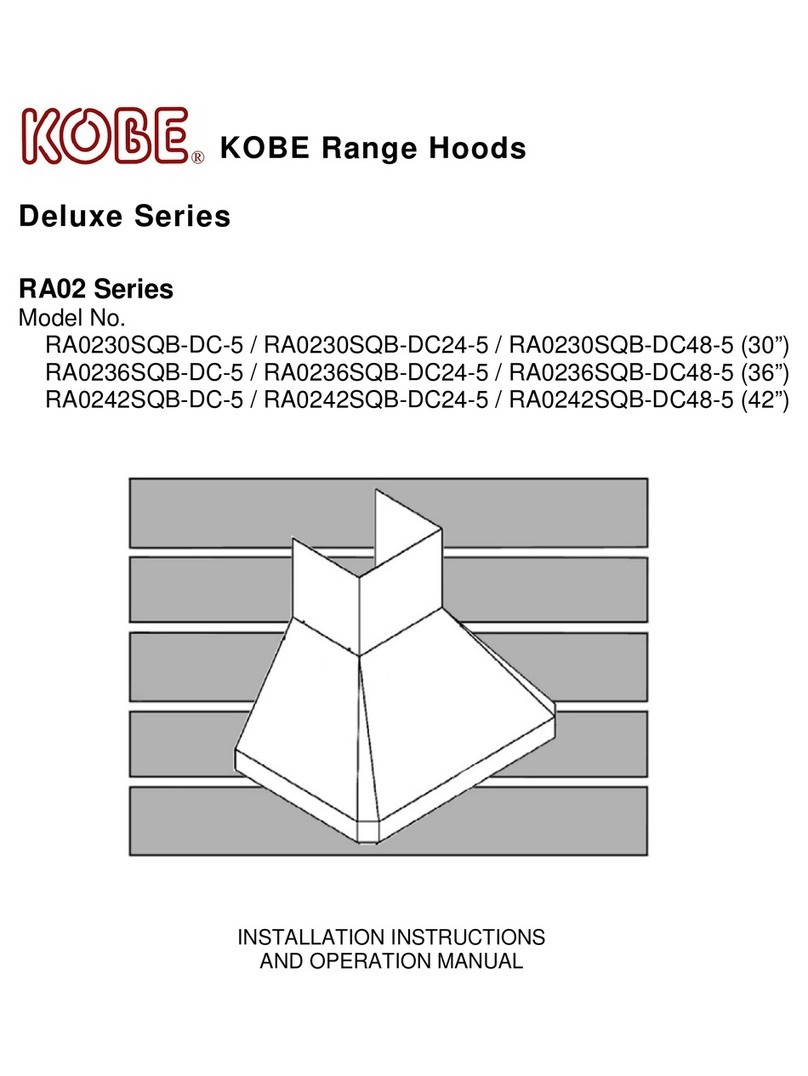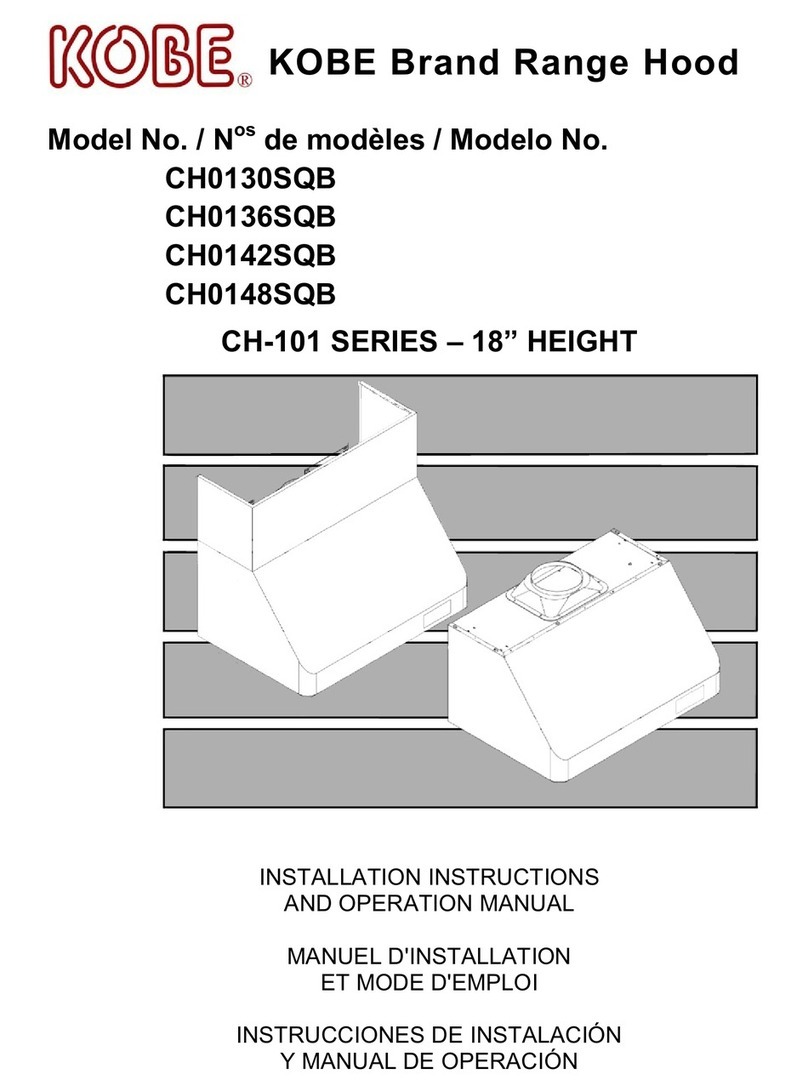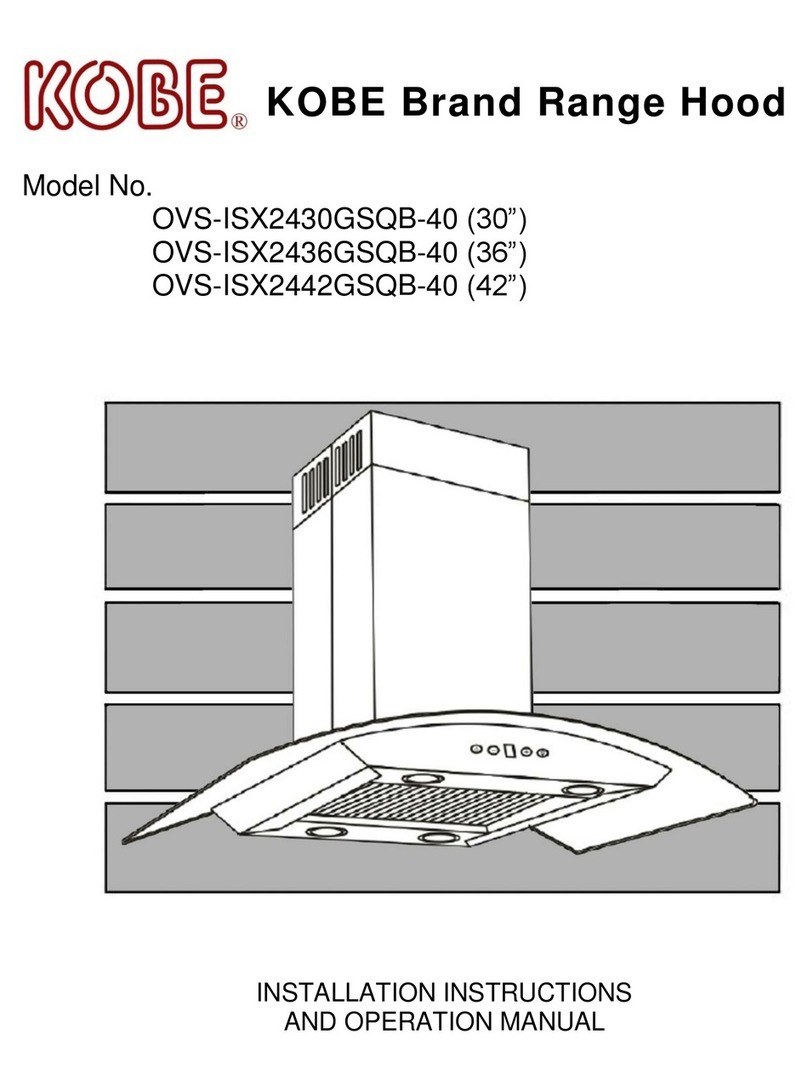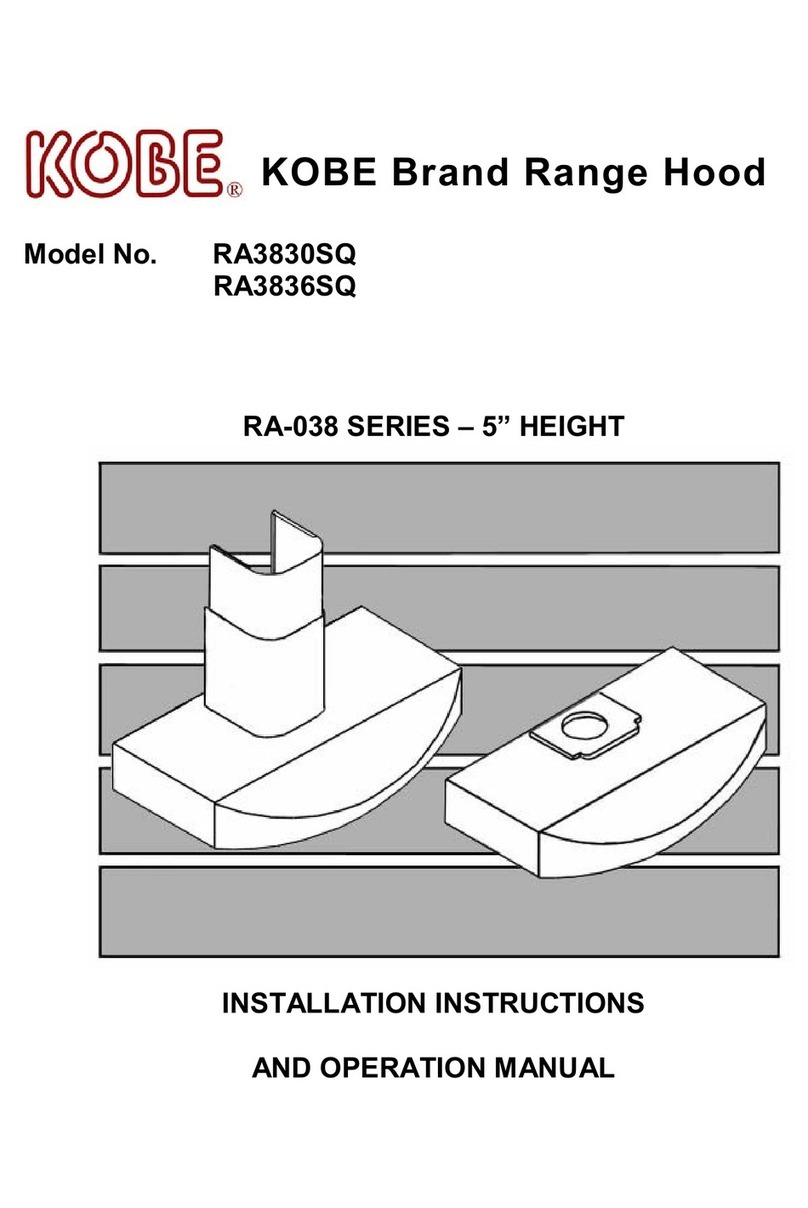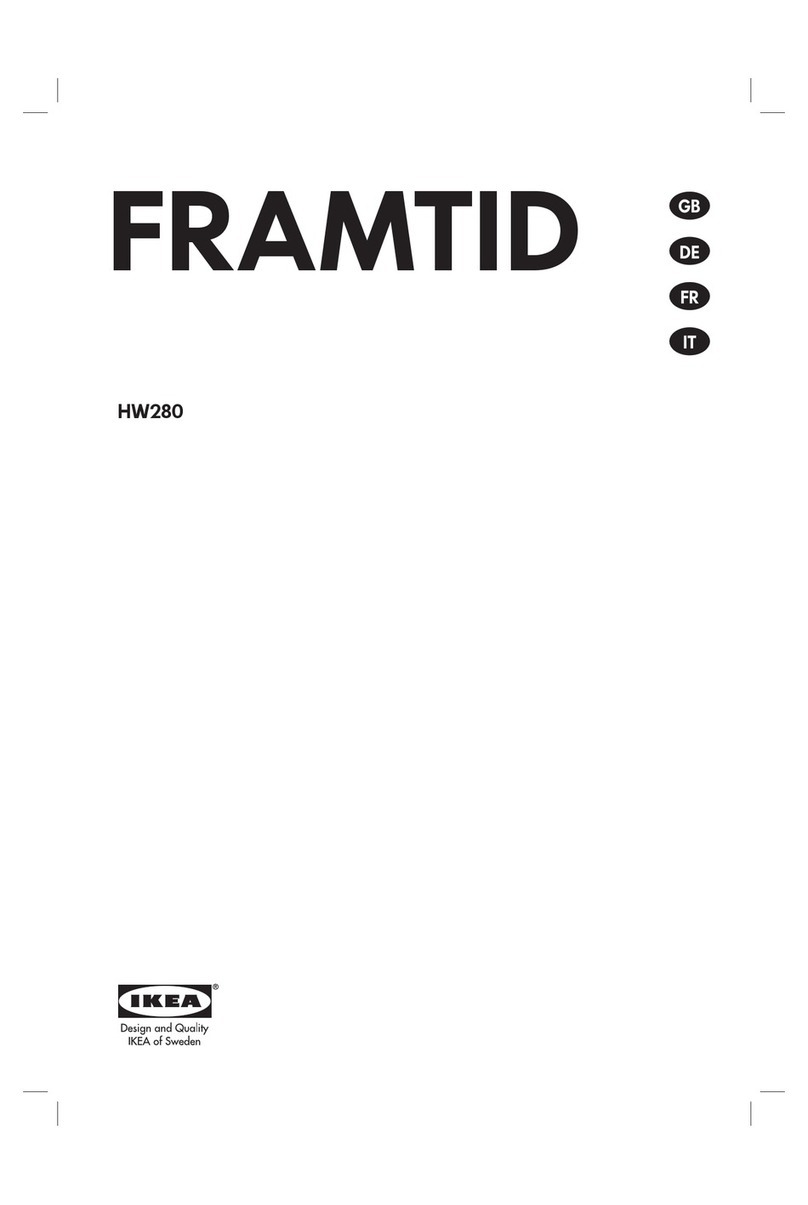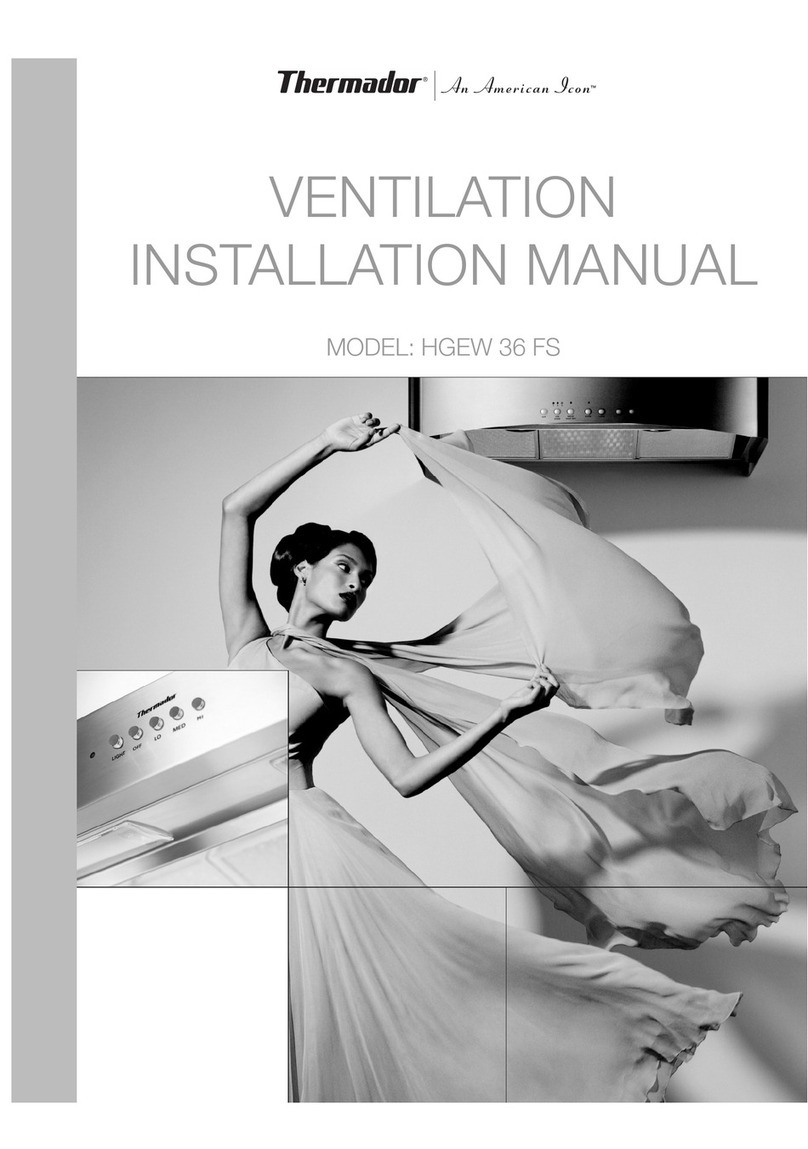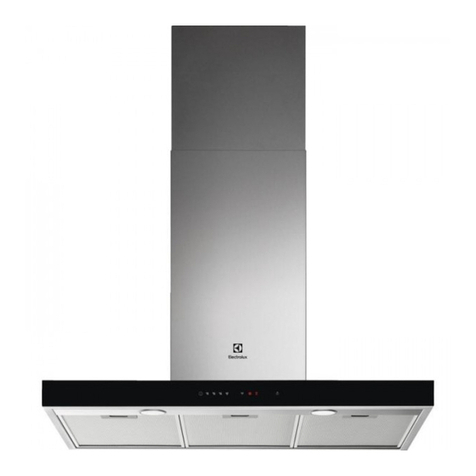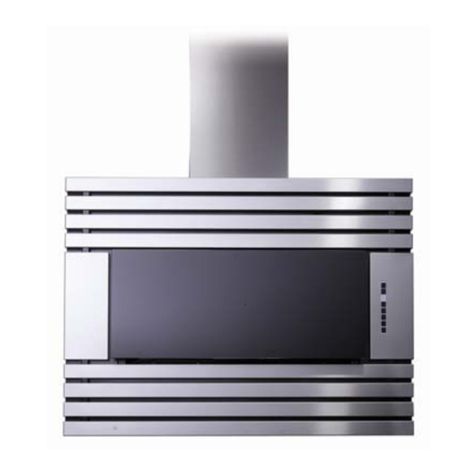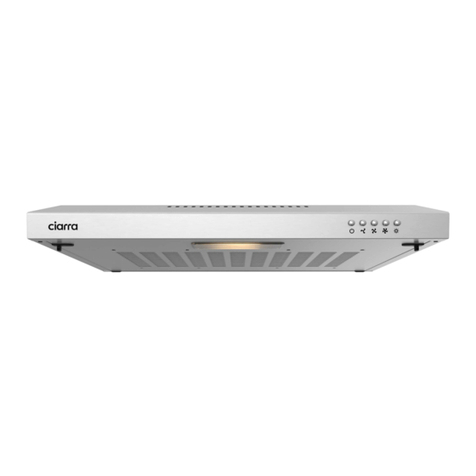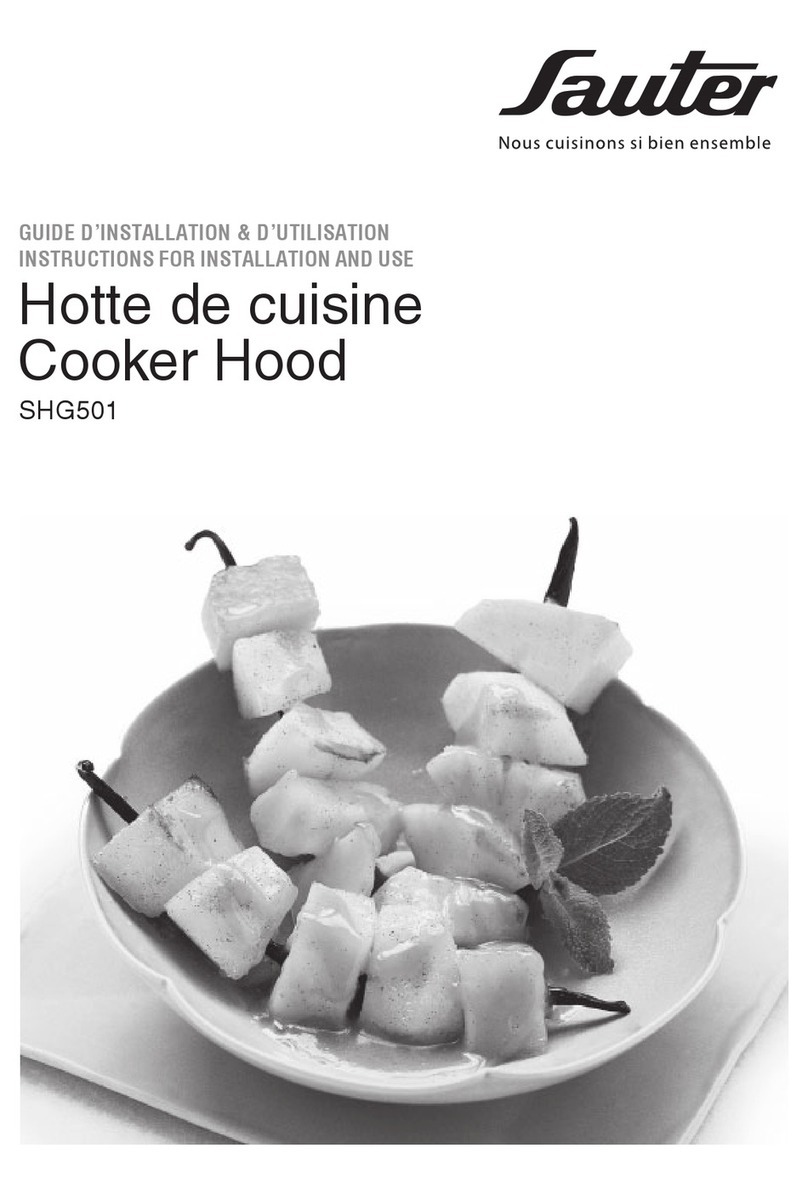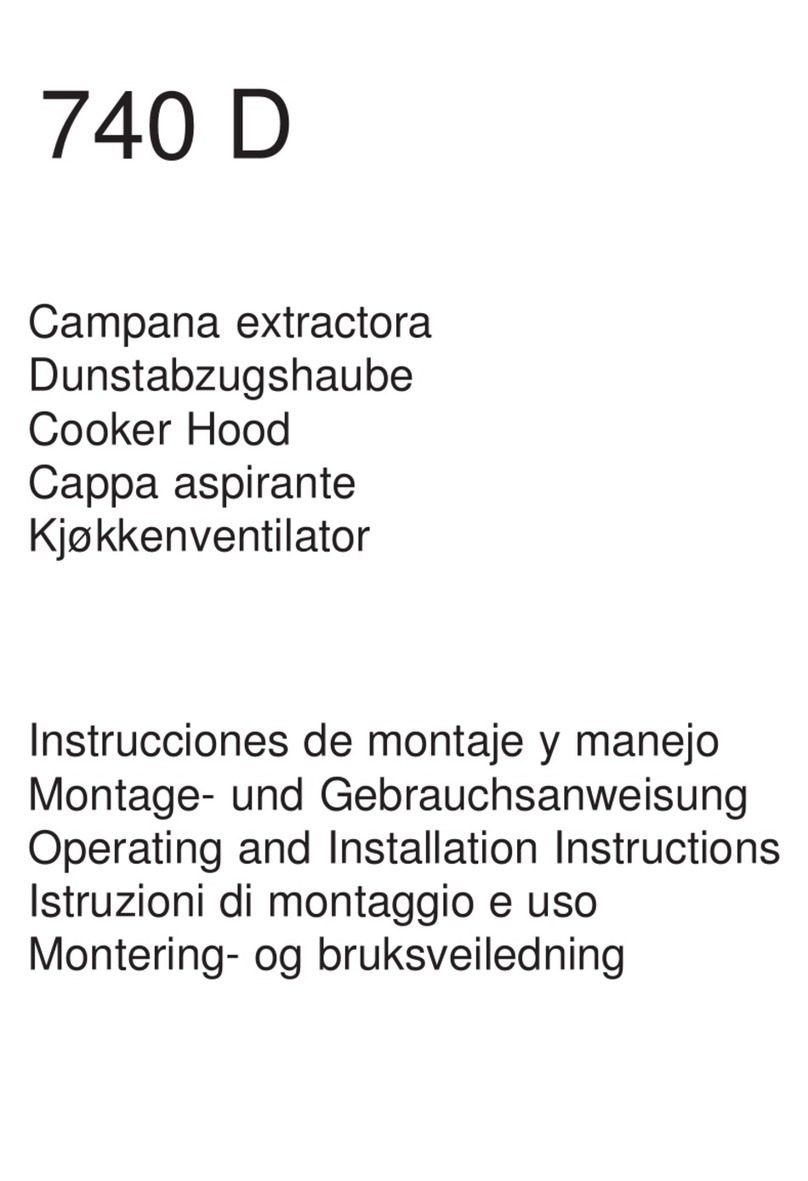
6
UNDER THE CABINET INSTALLATION
Preparation Before Installation
NOTE: TO AVOID DAMAGE TO YOUR HOOD, PREVENT
DEBRIS FROM ENTERING THE VENT OPENING.
•
Decide the location of the venting pipe from the hood
to the outside. Refer to Figure 1.
•
A straight, short vent run will allow the hood to
perform more efficiently.
•
Try to avoid as many transitions, elbows, and long
run as possible. This may reduce the performance
of the hood.
•
Temporarily wire the hood to test for proper operation
before installing.
•
Important: Peel protective film off the hood, if
any.
•
Use duct tape to seal joints between pipe sections.
•
For installing under the cabinet with recessed
bottom, attach 4-inch wide wood filler strips (not
included) on each side. Refer to Figure 2.
•
Using references in TABLE 1 on page 4 and
Measurements and Diagrams on page 18, create
access opening for electrical wires and hood exhaust
under the cabinet.
Hood Installation
CAUTION: If moving the cooking range is necessary
to install the hood, turn off the power on an electric
range at the main electrical box. SHUT OFF THE GAS
BEFORE MOVING A GAS RANGE.
1. Puncture the knockout holes (for mounting under the
cabinet) on the hood as shown in Figure 3.
2. Attach ducting transition to hood exhaust with ten
(3/16” x 3/8”) screws (included). Shown in Figure 4.
3. If necessary, attach two rubber stands (included) with
adhesive tape (included) to the back corners of the
hood.
4. Draw electrical wires through cabinet access opening.
5. Center the hood beneath the cabinet and flush with the
front of the cabinet.
6. From inside of the hood, place screw (not included)
into the center of each knockout hole and secure to
cabinet bottom. Once all mounting screws are in place,
finish tightening screws until secure. CAUTION:
MAKE SURE HOOD IS SECURE BEFORE
RELEASING.
7. For safety purpose, pre-drilled mounting holes are
provided through the back of the hood. For a more
secure installation, use as many mounting holes as
needed to secure from the inside of hood (screws not
included).
Figure 1
Figure 2
Figure 3
Figure 4
